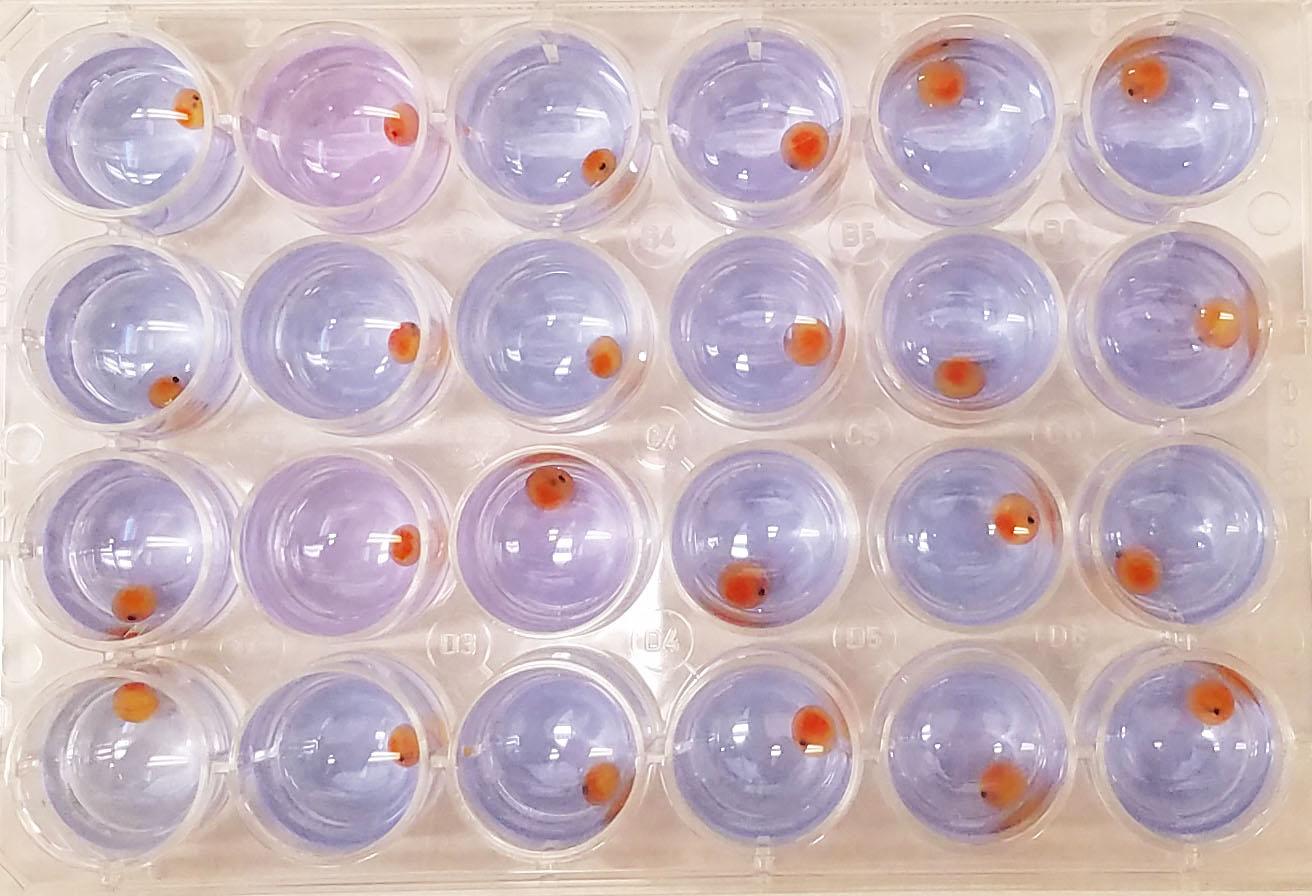
Efficient, rapid assay for predicting the growth rate of aquaculture species based on metabolic rate of the fertilized egg
Our project aims to optimize the growth rates of aquaculture species to not only enhance their marketability, but also reduce the time and expenses associated with rearing less productive fish. Our approach centers around the use of Alamar Blue®, a non-toxic cell viability reagent that effectively tracks production of NADH2. This replaces traditional method of monitoring O2 consumption and CO2 production, which sadly, has proven insensitive for large volumes of fish. We believe that this innovation could significantly reduce costs for commercial growers who spend valuable years identifying and culling slow-growing fish like sturgeon. Furthermore, this will provide an opportunity for growers who embrace broodstock programs, permitting them an early selection for fastest growing families at the egg stage itself. This means no more separate long-term hold and evaluation groups, translating to significant savings in resources, time, and capital.
Objectives:
- Confirm that the assay is applicable in 4 important aquaculture species (tilapia, trout, sturgeon, shellfish).
- Test the effects of sex determination and polyploidism on metabolic rate.
Project Summary
| Duration: | 2 years |
|---|---|
| Funded Date: | 09/01/2012 |
| Funding level: | $120,000 |
| PI: | |
| Advisors: | |
| Location: | Arizona – AZ, Idaho - ID, Oregon - OR |
| Species: | Oysters, Tilapia |
| Topics: | Culture/egg quality, Hatchery, Metabolic rate, Rapid assay |
